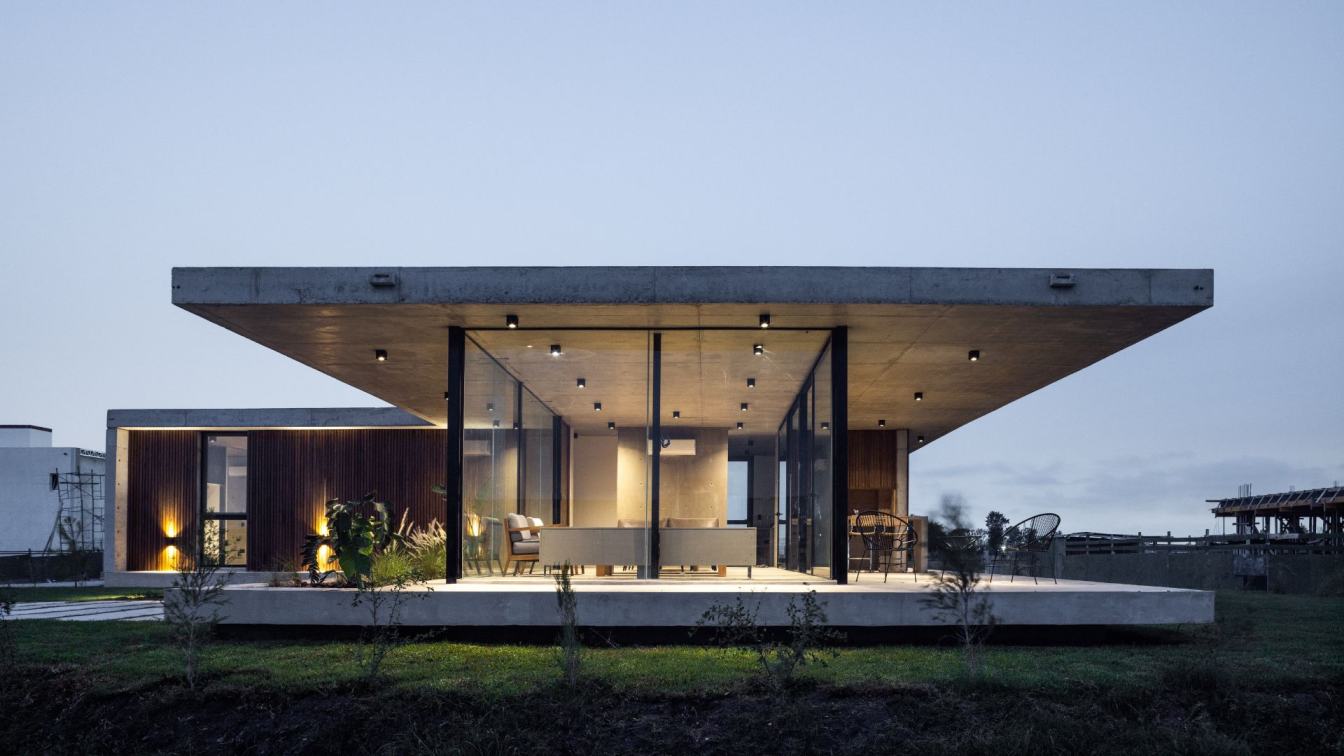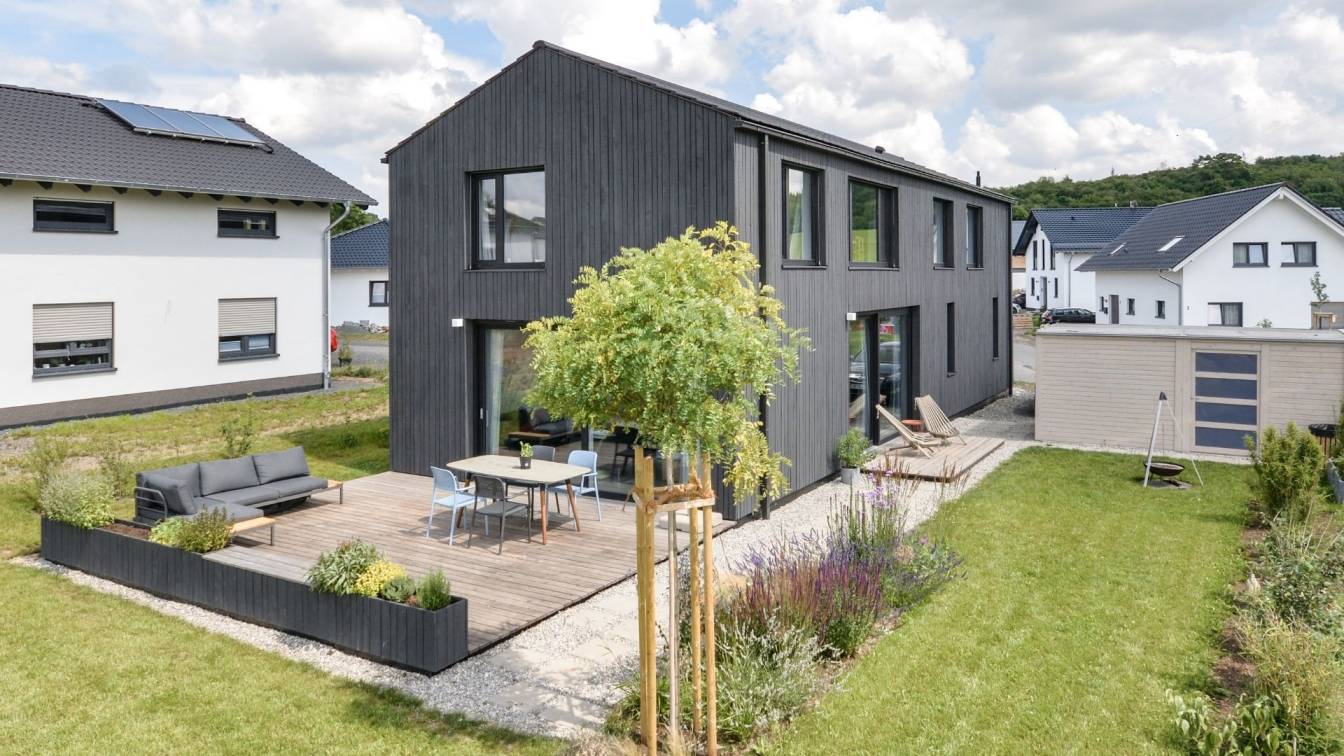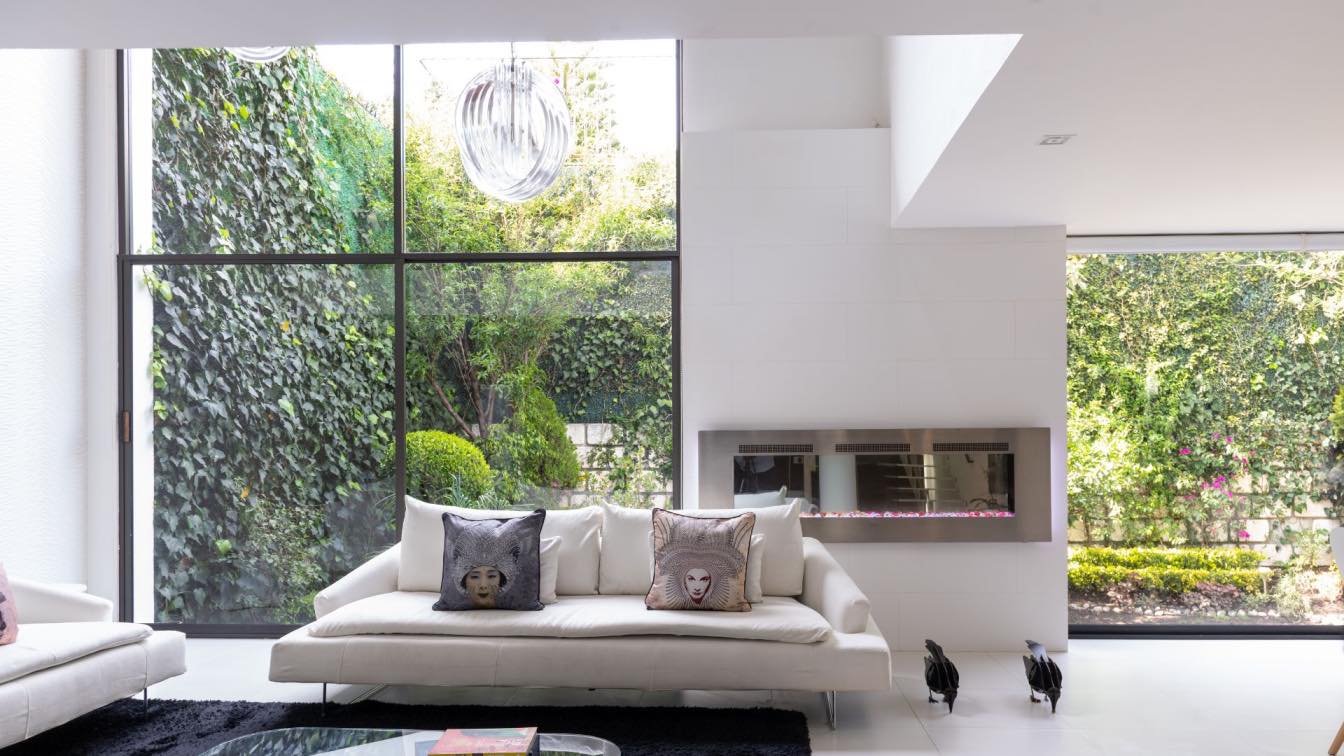Sanjay Puri Architects presents Zen Spaces, a 4-level, 27,000 sqft home located in Jaipur, Rajasthan, India. Blurring the lines between the inside and the outside, Zen Spaces integrates with the existing landscape, screening and allowing filtered light in different ways within each space, infusing volumes with light and shadows to transform differently at different times.
Situated on a relatively large plot, with an existing house on the southern side, the clients wanted a new house since the family had grown larger. Keeping most of the existing garden as a common space for both houses, the new home is built on the extreme northern end, with roads on 3 sides. All existing trees on the site were retained, with the new house ensconced in the clear space between them.
The house is a composition of cuboid volumes punctuated with an open courtyard, built on 4 levels to accommodate three generations living together.
A subterranean level, lit naturally by a sunken courtyard, houses a large lounge, a gym, and service areas. The ground floor and the first floor have living and dining spaces, with three bedrooms and a small lounge located on each level. The second floor features a multipurpose room that opens onto a large north facing terrace.
The circulation spine within the house skirts the courtyard, allowing a visual connection to the landscaped spaces while moving within the house.
Each part of the house is naturally lit, with diffused indirect sunlight permeating the inner volumes. Jaipur city has 8 months of summer with temperatures in excess of 35°C, and 4 months of winter with temperatures averaging between 12-21°C.

The house is punctuated with a winter deck on the southern side facing the large garden, and a linear summer deck fronting the main living and dining spaces on the northern end. The two decks provide sheltered outdoor seating, usable throughout the year for family gatherings.
In addition, each room opens into its own private outdoor deck, balcony, or terrace, providing individual open spaces for everyone in the house. These outdoor decks act as a shelter from the excessive heat of the summer months, while keeping the inner spaces cooler. The summer decks look out towards the large garden, and the winter deck looks out towards large trees, with each of the individual room decks opening into a mix of bamboo & other trees.
To reduce the heat gain of the summer months, and to simultaneously provide privacy and reduce noise from the arterial road the house fronts, a series of GFRC screens sheath the east, west, and south sides, with the north side more open. These screens allude to the stone screens of traditional architecture of Jaipur city, and of Rajasthan.
The house has a simple RCC structure frame, with all walls made in fly ash bricks, and including water recycling, rainwater harvesting, and a solar water heating system. The house was built by local contract labour from the vicinity, and most materials used in its construction were procured within a 100 km radius. Every part of the house is naturally ventilated, with the courtyard contributing to passive cooling.

The interior palette is predominantly neutral in shades of grey, with accents in the form of art and furniture. 80% of the furniture was custom made on site by local contract carpenters, and is constructed of Indowud, a rice husk ecofriendly wood substitute. Lime plaster from local craftsman is used on all of the walls, reducing cement usage to a minimum.
In most areas of the house, the ceiling is left as exposed concrete. A small prayer room forms a focal point along the circulation spine. This room, called a ‘pooja room', is a small temple within the house, and a quintessential part of most Indian homes. As all Hindu temples have a bell at the entrance, the prayer room in the house is adorned with a series of small bells in concentric circles of diminishing height, forming a dome shape echoing the traditional temple.
There are varying degrees of transparency throughout the inner spaces, with each of the living, lounge, dining, outdoor, and circulation spaces seamlessly integrated. Spaces are visible to an extent allowing for a more spatial experience, and yet simultaneously private. At night, the house lights up in parts, displaying its solid and perforated volumes juxtaposed together in a sculptural way. The design of the house, with its courtyard, screens, indirect natural light, and complete natural ventilation, makes it extremely energy efficient.
Contextual to the site location and the climate of the region, Zen Spaces is a home offering different experiences in each of its parts, seamlessly interspersed with nature.









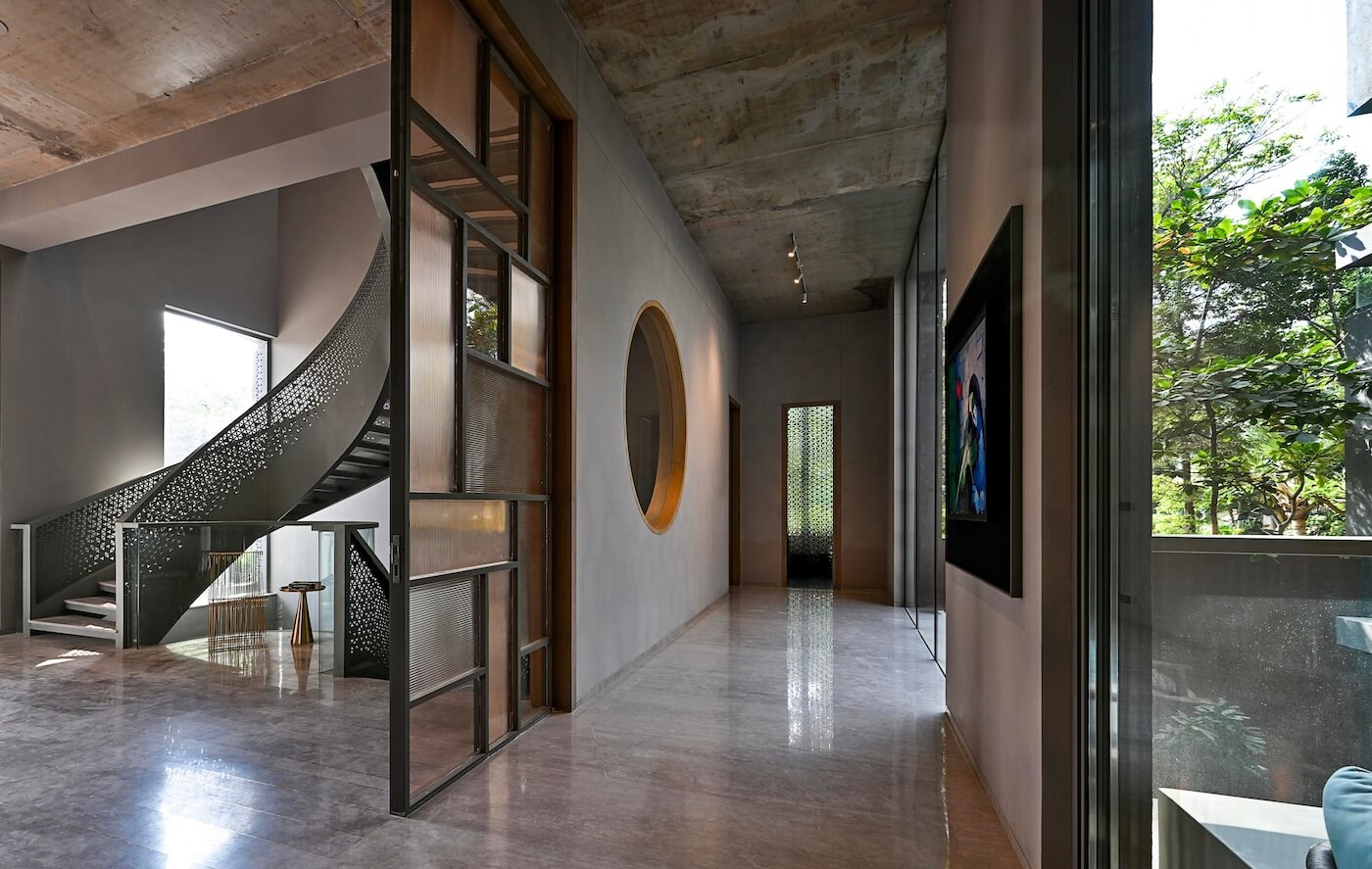





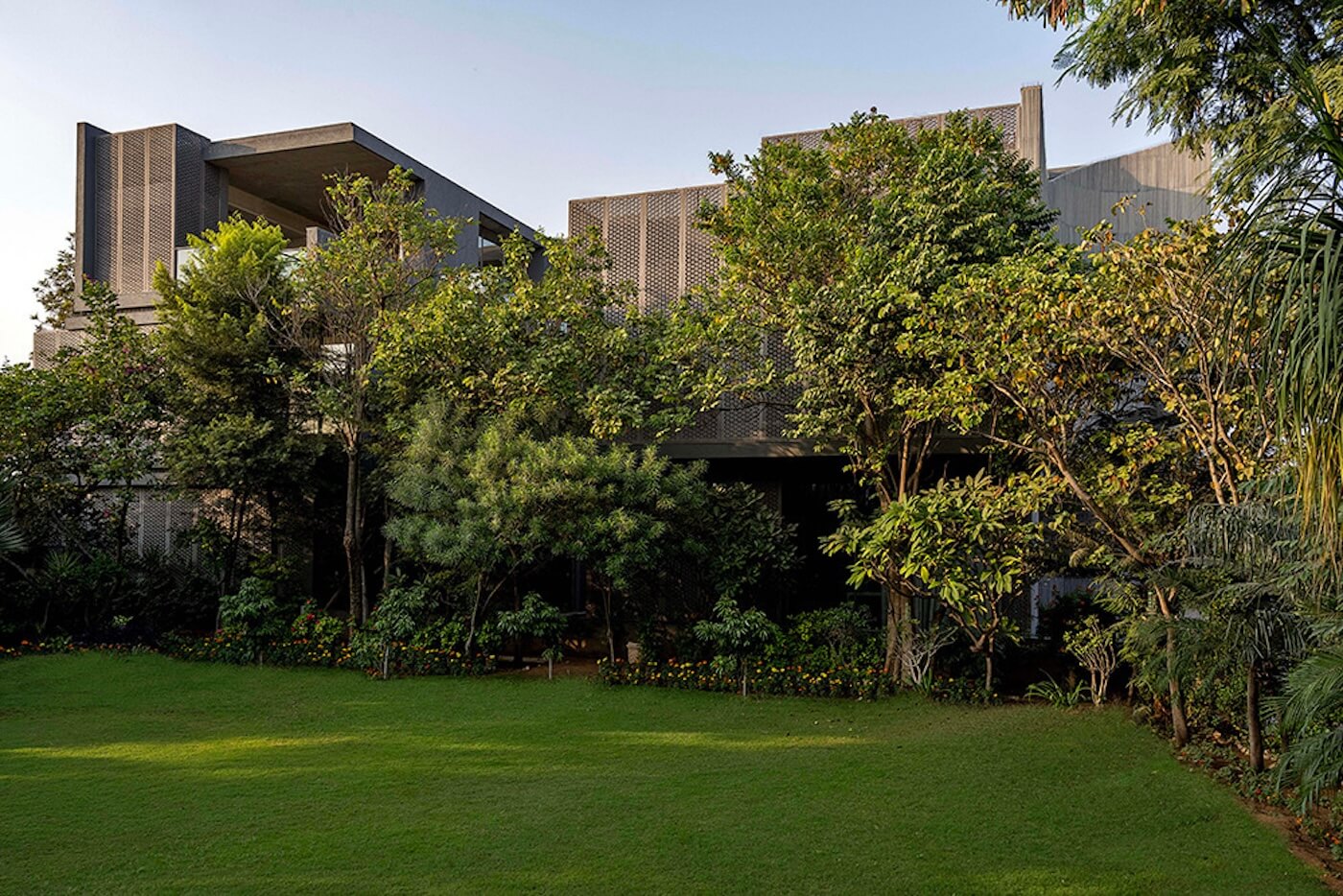








About Sanjay Puri Architects
Sanjay Puri Architects has been listed in Archdaily’s list of Top 100 architects worldwide and in the WA UK top 100 architectural firms, as well as the Architizer New York’s top130 architecture firms in the world.
Winning the CDA 2023 Paris Best Residential Project Worldwide, The LOOP Design Awards Best Large Architectural Firm, The Best Housing Project Worldwide in the World Architecture Festival, Lisbon 2022, The LEAF Awards London, Best Interior Project 2021, the firm has won over 360 awards including 270 International design awards.
With founding partners Sanjay Puri & Nina Puri, the firm has won architectural projects in Australia, Spain, Montenegro, UAE, Oman, and Dallas (USA). Additionally, they are currently involved in the design of projects in 36 Indian cities.
Sanjay has been on the jury of the World Architecture Festival in Barcelona, Singapore, Berlin, Amsterdam, and Lisbon as the first Indian architect. He also served as a judge for The Architectural Review Awards, UK, Dezeen Awards, UK, The Plan Awards, Italy, Inde Awards, Australia, and has been a speaker at several international and national conventions.
Sanjay is a registered member of the RIBA, UK, Society of American Registered Architects (SARA, New York), Indian Institute of Architecture (IIA), and Indian Institute of Interior Designers(IIID). He has also been a part of the Heritage Conservation Committee, New Delhi.
With a current firm strength of 90, the essence of the firm’s design philosophy embraces evolving design solutions that are contextual and sustainable, resulting in spaces that explore spatial perceptions with new design directions.



